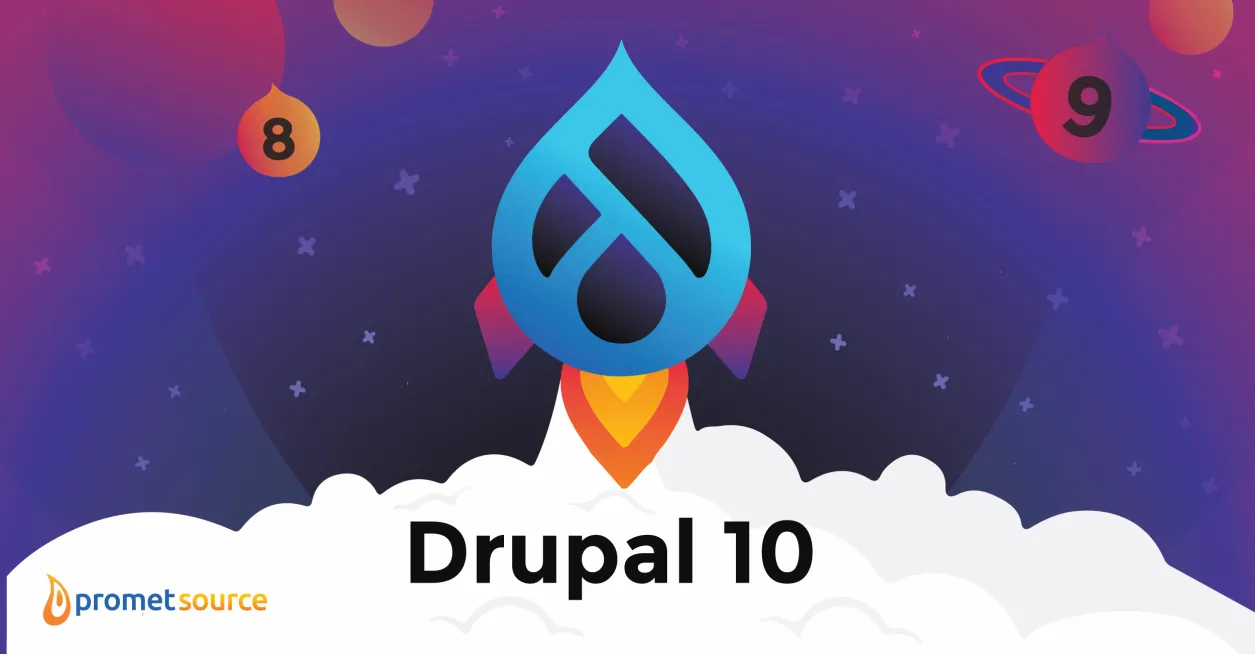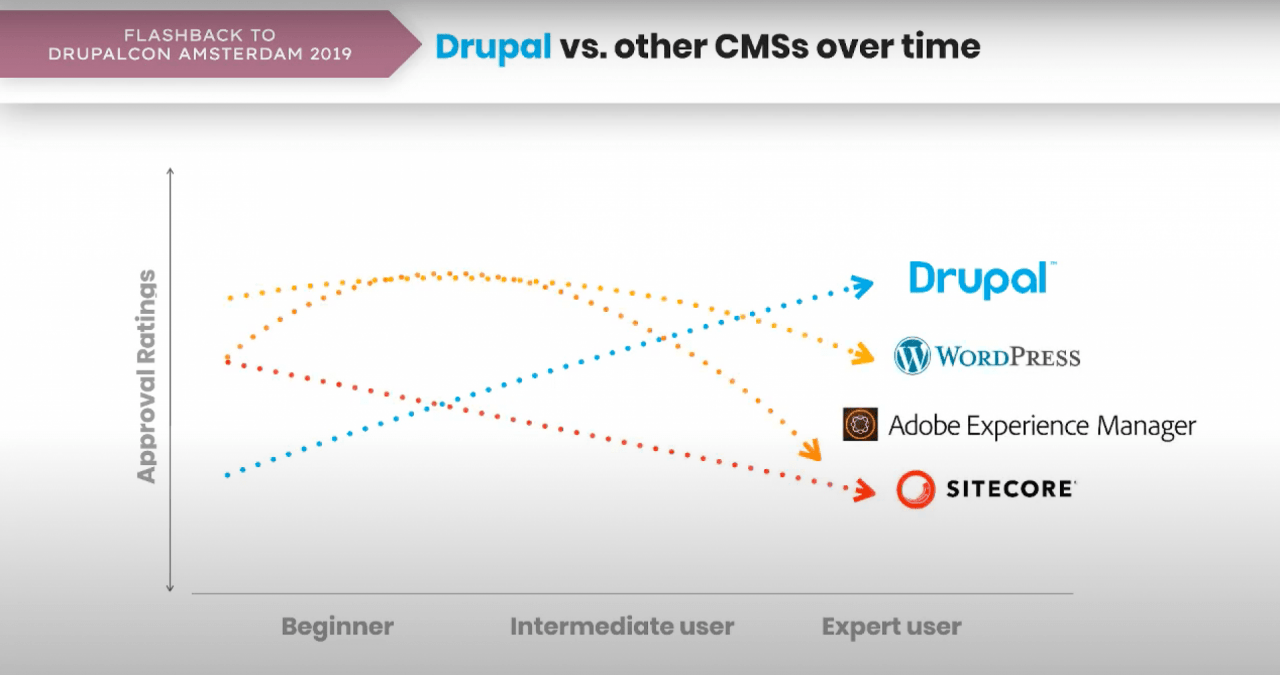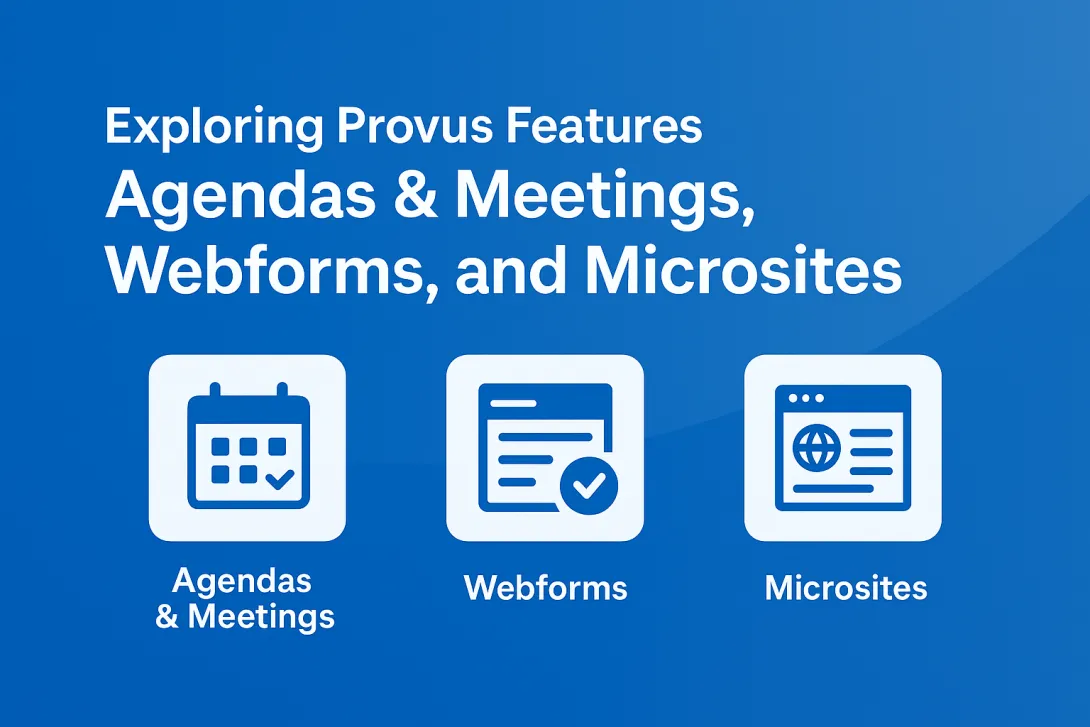The Next Frontier: Top 10 New Features of Drupal 10

Table of Contents
Takeaway: Drupal 10, releasing December 14, represents a significant evolution in the CMS's 20-year history. This update is driven by necessity as Drupal 9 will reach end-of-life in November 2023 due to its dependency on soon-obsolete Symfony 4 and CKEditor 4. The new version brings ten key improvements that make it the best version of Drupal yet.
EXPERIENCE DRUPAL 10'S BENEFITS—CHECK OUR DRUPAL MIGRATION SERVICES
Powering the NASA site, along with 14% of the top 10,000 websites worldwide, Drupal marks the next frontier in its 20-year history this month with the December 14 release of Drupal 10.
Among the biggest questions concerning the upcoming release: Why now?
The fact is, the December 14 release date is a Drupal community imperative, and not a moment too soon. As Gabor Hojtsy, Acquia’s Drupal 10 initiative coordinator, explained during last summer’s DrupalJam event, Drupal 9 is based on Symfony 4 and CK Editor 4, both of which are slated for end-of-life status in November of 2023.
This means that Drupal 9 will face end of life next November, as well.
This means there’s only an 11-month overlap between the release of Drupal 10 and all of the modules and dependencies that will need to be updated before the end of Drupal community support for Drupal 9.
Symfony-driven schedule
If a Drupal version hard stop due to a Symfony version end-of-life is sounding familiar, the story was essentially the same last year. Drupal community support for Drupal 8 ended in November of 2021, without the option of extended commercial support, due to the November 2021 EOL of Symfony 3.
These days, Drupal is built on top of Symfony, which means that Symfony release schedules greatly impact Drupal major version release dates.
However, Drupal 7, which was built before the adoption of the Symfony framework, is still receiving Drupal community support. Drupal 7’s security support and bug fix window has been extended a few times (although we recommend migrating from Drupal 7 ASAP).
Fortunately for the 53.4 % of Drupal sites still on Drupal 7, Drupal 10 incorporates a direct Drupal 7 upgrade path.
So what’s new for Drupal 10? Here’s Promet’s list of the top 10.
1. Drupal 10 represents a significant shift to the values of the open web
Designed to fuel greater inclusivity for both users and developers from other communities, this latest version of Drupal incorporates beginner-friendly strategic initiatives.
Among the upgrades that will have an impact extending Drupal’s reach are streamlined JavaScript support, the Decoupled Menus initiative, and the Starterkit theme generator.
2. The Drupal 9 to 10 upgrade path is simple and straightforward
The process and tools for upgrading from Drupal 9 to 10 are a direct duplication of the Drupal 8 to 9 upgrade path, leveraging the Drupal 8 version of the Upgrade Status module. Upgrade Status provides an accurate overview and a to-do list of the LOE needed to upgrade from Drupal 9 to Drupal 10.
The recent trend toward tighter time spans between Drupal releases (Drupal 9 hit the scene on June 3, 2020) has helped to sharpen the Drupal community’s focus on backward compatibility and an easy upgrade for sites that are up to date with the most current version of Drupal.
Two other factors that are driving easier upgrades in a post-Drupal 8 world:
- The sophisticated architecture that Drupal 8 ushered in has helped to streamline upgrades.
- Increased maturity for Drupal Rector can be counted on to create most of the changes needed to migrate custom modules to Drupal 10.
3. The upgrade to Symfony 6.2 and PHP 8.2 has laid the foundation for tighter security and a higher-performance back-end
The Symfony 6 upgrade has resulted in the removal of a considerable amount of deprecated code. In addition to enabling greater speed and site performance, the latest PHP and Symfony enhancements will drive a more sophisticated user experience.
4. The clean, accessible, and powerful Claro administration theme is replacing Seven
Claro offers a significant enhancement in user experience.
It’s also viewed as a modern step forward, replacing the Seven theme, which has come to be viewed by many as having a dated look and feel.
5. In replacing Bartik, the new Olivero default front-end theme is modernizing the Drupal out-of-the-box experience
In addition to presenting a more contemporary image than the Bartik theme that preceded it, Olivero has accessibility features baked in, conforming to WCAG 2.0 AA. Olivero’s functionality is also designed to accommodate a more robust range of features.
6. The replacement of CKEditor 4 with CKEditor 5 means a streamlined authoring experience for content managers and editors
Along with Claro as the new default administrative theme, the upgrade to CKEditor 5 provides a simplified interface and improved editing features for content creation.
Enhanced features include track changes, revision history, intelligent text predictions, and the ability to export to PDF.
7. Modern JavaScript components replace some uses of jQuery
Streamlined JavaScript support, with modern JavaScript replacing certain uses of jQuery, is cited among the most significant upgrades of Drupal 10. In years past, jQuery facilitated front-end development by simplifying JavaScript complexities.
As JavaScript has evolved and improved, jQuery’s usefulness has declined. Most of its features have now been incorporated into JavaScript. Removal of jQuery will enhance efficiencies due to a sharper focus on JavaScript’s built-in functionality.
8. The Starterkit theme generator will streamline customization
A significant step forward for Drupal front-end developers, the Starterkit theme generator simplifies the process of customizing a site to align with design and branding guidelines. The new Starterkit theme will allow front-end developers to get a copy as a starting point for their theme. Tooling is provided as part of the Drupal command line interface.
9. Coming Soon: Automatic updates for Drupal Core
Despite the controversy, automatic updates are one of Drupal’s most frequently requested features. Users are attracted to the prospect of built-in security fixes and upgrades.
Both complicated and controversial, with distinct objections and concerns emanating from both enterprise sites and small users, automatic updates will not be available on Drupal 10’s release date. Development is progressing at a steady clip, and with an actual release date TBA.
10. New initiatives aim to broaden access to Drupal

A user research project presented last DrupalCon Amsterdam 2019 by Dries Buytaert revealed that Drupal has the lowest approval rating among new users but the highest rating among expert users. Findings such as these have contributed to initiatives to expand Drupal’s reach to a broader range of developers.
One such effort bundles the three modules, Media, Layout Builder, and Claro, which are now stable enough to be turned on by default.
Additional initiatives designed to enable less experienced developers to leverage all that Drupal has to offer include a sharpened focus on no-code / low-code site building experiences, as well as the Decoupled Menus initiative, Project Browser, and the Easy-Out-of-the-Box strategic initiative.
As the next frontier, this new version of Drupal represents leaps forward on multiple fronts within the framework of the sophisticated architecture that was ushered in with Drupal 8.
Experience Drupal 10 with Promet Source
As Drupal devotees and open source evangelists, Promet’s overarching take on D10 is that Drupal never disappoints in its determination to push the innovation envelope to introduce next-level features and functionality.
Staying on top of what’s new and next with Drupal calls for a lot of focus and perspective. That’s exactly what Promet brings to the table.
Have a question or concern about Drupal 10? Let's talk.
EXPERIENCE DRUPAL 10'S BENEFITS—CHECK OUR DRUPAL MIGRATION SERVICES
Get our newsletter
Get weekly Drupal and AI technology advancement news, pro tips, ideas, insights, and more.





